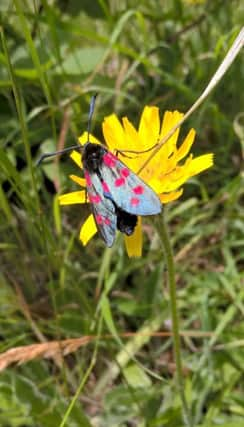Moths are beautiful and important


Moths are widespread, diverse and form a vital part of the ecosystem, but despite this they are often overlooked.
However, from July 22, the nation’s moths will take the limelight for National Moth Week, a celebration of their beauty and importance.
Advertisement
Hide AdAdvertisement
Hide AdNational Moth Week is open to all ages and abilities, and participants are encouraged to learn about and observe the vast range of moths that inhabit our towns and cities.
Moths come in a great variety of shapes and sizes and can be found in an equally varied range of habitats, from urban car parks to wildflower meadows.
Moths have a sweet-tooth and a keen sense of smell, so if you wish to observe them from the comfort of your own home, leave out a selection of fermented fruit and sugar, this will serve as the ultimate free buffet for moths in your area.
They are also drawn to light, so switching a light on outside will bring them right to your door.
Advertisement
Hide AdAdvertisement
Hide AdHere are some local species that you might be lucky enough to spot:
The hummingbird hawk moth, like some other moths, are actually day-flying, rather than nocturnal.
The hummingbird hawk moth is a sun-seeker, most commonly seen flying in the sunshine, sipping nectar from flowers using its long proboscis.
This moth has grey-brown forewings and orange hindwings that beat so rapidly when the moth is in flight that they produce an audible hum.
Advertisement
Hide AdAdvertisement
Hide AdThe cinnabar is a striking moth, easily identifiable by its bright red hindwings and the distinctive red marks that punctuate its black forewings.
This moth is day-flying, and is often seen in grassy areas such as meadows.
The common plume is unusual in that it can be seen at all times of year, although spotting them can be tricky as they often rest with their wings wound up in a tight roll.
This, combined with their brown colouring, gives a resting common plume the appearance of a small twig or a rolled up leaf, so if you’re hoping to see this particular moth you’ll need to look carefully.
Download a moth spotter sheet at hiwwt.org.uk.